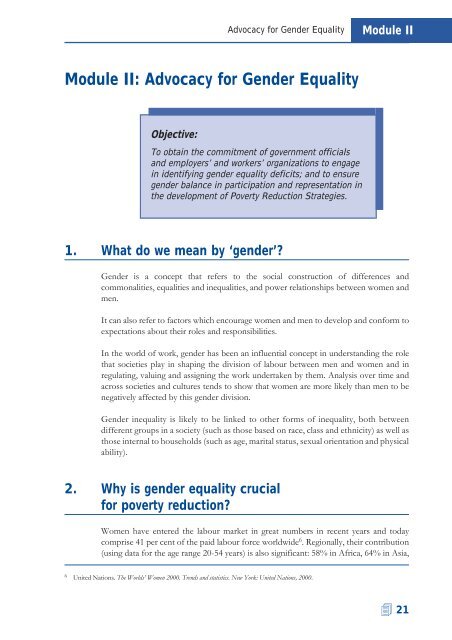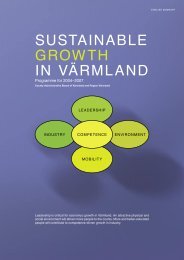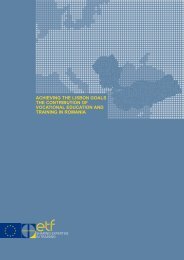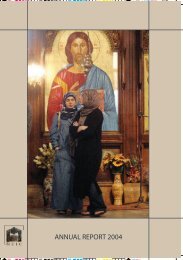PDF (345 KB ) - Document Database website
PDF (345 KB ) - Document Database website
PDF (345 KB ) - Document Database website
Create successful ePaper yourself
Turn your PDF publications into a flip-book with our unique Google optimized e-Paper software.
Advocacy for Gender Equality<br />
Module II<br />
Module II: Advocacy for Gender Equality<br />
Objective:<br />
To obtain the commitment of government officials<br />
and employers’ and workers’ organizations to engage<br />
in identifying gender equality deficits; and to ensure<br />
gender balance in participation and representation in<br />
the development of Poverty Reduction Strategies.<br />
1. What do we mean by ‘gender’<br />
Gender is a concept that refers to the social construction of differences and<br />
commonalities, equalities and inequalities, and power relationships between women and<br />
men.<br />
It can also refer to factors which encourage women and men to develop and conform to<br />
expectations about their roles and responsibilities.<br />
In the world of work, gender has been an influential concept in understanding the role<br />
that societies play in shaping the division of labour between men and women and in<br />
regulating, valuing and assigning the work undertaken by them. Analysis over time and<br />
across societies and cultures tends to show that women are more likely than men to be<br />
negatively affected by this gender division.<br />
Gender inequality is likely to be linked to other forms of inequality, both between<br />
different groups in a society (such as those based on race, class and ethnicity) as well as<br />
those internal to households (such as age, marital status, sexual orientation and physical<br />
ability).<br />
2. Why is gender equality crucial<br />
for poverty reduction<br />
Women have entered the labour market in great numbers in recent years and today<br />
comprise 41 per cent of the paid labour force worldwide 6 . Regionally, their contribution<br />
(using data for the age range 20-54 years) is also significant: 58% in Africa, 64% in Asia,<br />
6<br />
United Nations. The Worlds’ Women 2000. Trends and statistics. New York: United Nations, 2000.<br />
21








